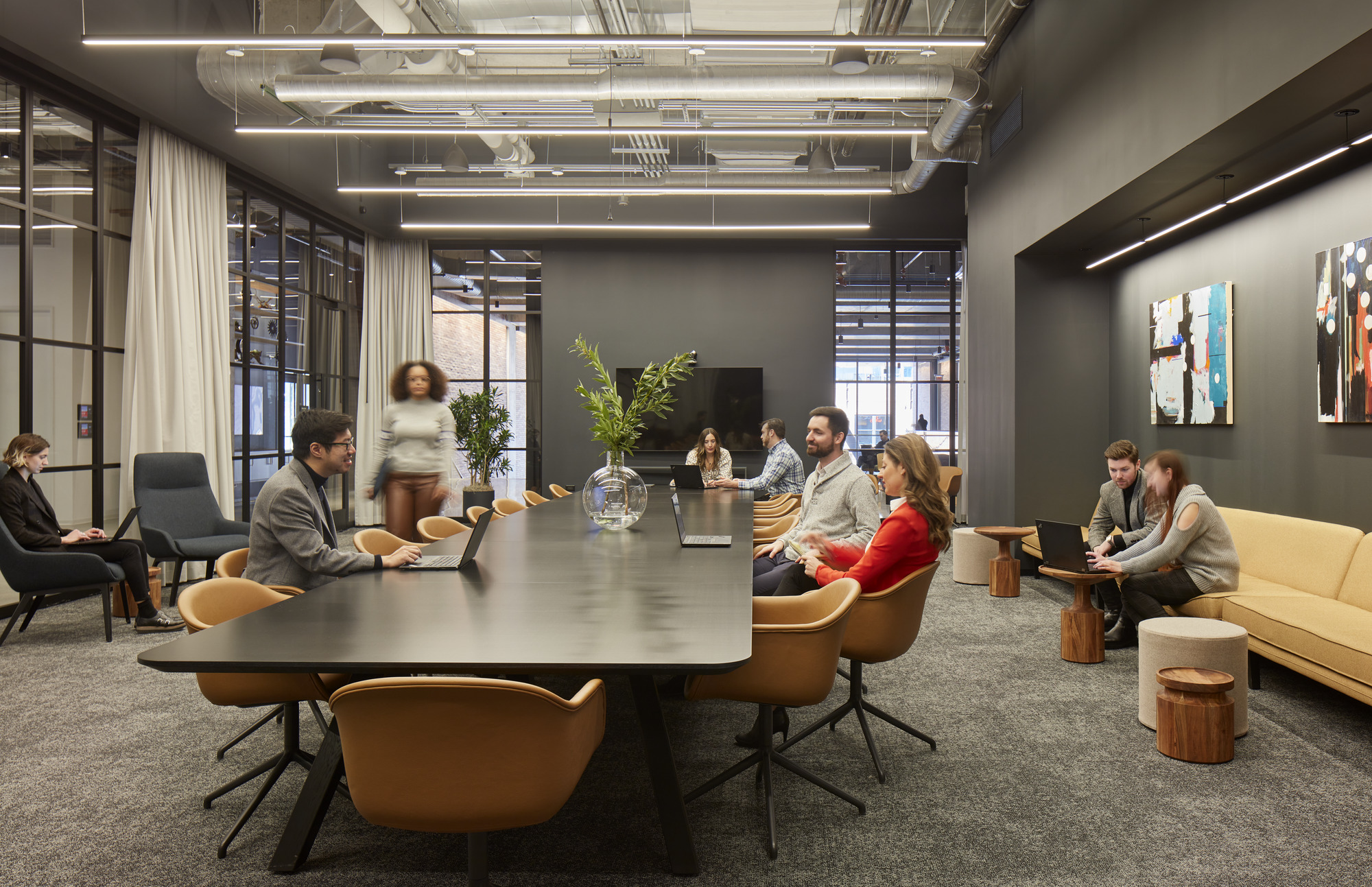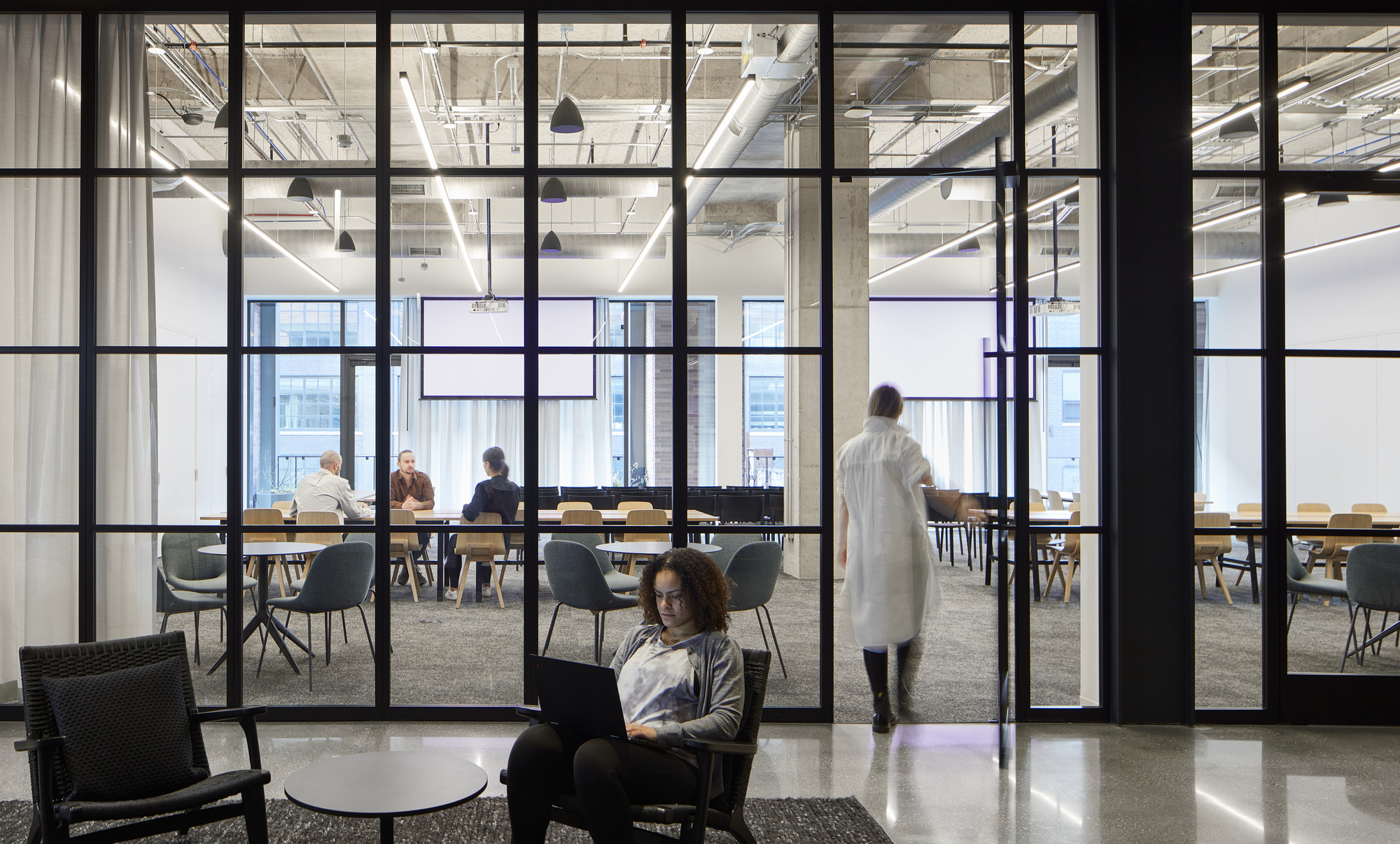Evelyn Lee is the Head of Workplace Strategy and Innovation at Slack Technologies, founder of Practice of Architecture, and co-host of the podcast Practice Disrupted. She will serve as the 101st President of the AIA in 2025.
Architects are an incredibly talented and creative group of individuals. We use our understanding of sound design principles and apply them to create buildings that are both beautiful and functional.
However, we continuously perpetuate our industry’s race to the bottom by focusing on the wrong things. In an ongoing series of building a better business for architects, I shared my thoughts on why architects struggle in business and why we need to develop intentional Mission, Vision and Values Statements.
Before jumping into the business plan, it is important to get into the right mindset. We must make sure that we concentrate on the appropriate things and refrain from wasting our energy on things beyond our control.
Do you find yourself repeating common phrases like:
- No one understands our value,
- Clients have unrealistic expectations,
- Project Managers and Contractors always seem to take away from our work,
- All the software companies are raking it in at our expense,
- Graduates these days don’t know what they’re doing,
- I’m frustrated with the added costs of continuing education credits and other professional development opportunities,
- It’s hard to find experienced licensed architects.
Let’s look at how we can reframe the above to focus on the right things and ultimately build a better business in the future.

800 Fulton Market by Skidmore, Owings & Merrill (SOM), Chicago, Illinois | Jury Winner, 11th Annual A+Awards, Offices – High Rise (16+ Floors)
1. No one understands our value.
Besides knowing and saying we don’t get paid enough, are we genuinely communicating our value to our clients?
Being undervalued has something to do with how others value their services and fees but more with how well you explain your value to your customers and how you differentiate your services from your competitors.
How is your message different from your peers, and how often do you let your clients speak about the value they received from your services?
As much as we would like to believe that our projects speak for themselves, the reality is that clients need to understand the connection between project outcomes and the business or personal value that you created by being their architect.
The reframe here is that we must rethink how we talk to our clients and, in turn, how we convey our value to them meaningfully by meeting their needs and using their vocabulary.
If we aren’t getting paid for the value we provide through the existing services, consider we may need to reposition or restructure what you offer to your clients altogether.
Think entirely new business models.
2. Clients have unrealistic expectations.
Unless you are working with larger institutions, and even sometimes when you do, the opportunity to work with an architect is often an individual’s first (and often only) opportunity to do so. Of course, they have no real expectations of what to expect.
To manage this, architects should build in time to create a comprehensive onboarding process for clients that helps them understand the complexities of an architecture project, understand how we work, and manage expectations from the beginning.
Many architects discuss the client relationship as a partnership, so approach it like any business partnership.

800 Fulton Market by Skidmore, Owings & Merrill (SOM), Chicago, Illinois | Jury Winner, 11th Annual A+Awards, Offices – High Rise (16+ Floors)
3. Fill-in-the-blank is taking away our scope of work.
First and foremost, if you are interested in taking back scope, understand what they (Who? Construction administrators, program managers, general contractors, the list goes on and on…) are doing and decide if you want to compete against them.
If yes, see point 1 in how you talk about your value differently.
Alternatively, take the time to seek out other opportunities to grow the business. Where are there opportunities for the firm to expand its scope with current clients? How about with new clients in different sectors?
4. All the software companies are racking it in at our expense.
First, we need to acknowledge that there’s an essential cost to doing business. Software companies have changed to software as a service model because they can realize more consistent revenue while continuously updating their product as they get consumer feedback (at least, that’s a general idea).
Make sure you budget and understand what your costs are. Architects need help understanding their firm’s technical debt and underutilized software. If you want to get the most out of what you are paying for, create mechanisms to ensure you get the most out of the subscriptions you already use.
5. Graduates these days don’t know what they are doing.
There’s an age-old battle between schools and practice and what’s taught versus how prepared individuals are when they enter the workforce. Independent of where you stand on the topic, you will not be able to change the curriculum in the universities any time soon.
So what can you do?
You can create a comprehensive onboarding process to help new graduates transition from school to practice.
In addition, set up intentional mentoring programs within the firm to support the growth and development of new grads.

800 Fulton Market by Skidmore, Owings & Merrill (SOM), Chicago, Illinois | Jury Winner, 11th Annual A+Awards, Offices – High Rise (16+ Floors)
6. Frustration with the added costs of continuing education credits and other professional development opportunities.
Remember all the talk in #1 about how often our clients undervalue us?
Have you ever considered the value of investing in yourself and the business to continue growing the work and evolving the practice?
Take a class on copywriting that will help you better communicate your value to others. Professional development like that can pay for itself many times over.
If you can’t see value in the courses you take for free to fulfill your CEUs, look for better ones. Perhaps the paid courses are worth the extra money you spend on them.
7. It’s hard to find experienced licensed architects, especially with all the technology companies calling themselves architects.
Titling conversations aside, more individuals are looking for mission-driven companies that allow them to have fulfilling careers and a life out of work.
If you can’t negotiate salary, look at the employment package, including flexible work hours, to identify other options.

800 Fulton Market by Skidmore, Owings & Merrill (SOM), Chicago, Illinois | Jury Winner, 11th Annual A+Awards, Offices – High Rise (16+ Floors)
Remember, when building a business, the only way to ensure you constantly move in the right direction is to control what you can. All architecture firms are a business first. To build the projects we want, we must design our businesses to be successful.
A study called “The Role of Mindset in Entrepreneurial Success,” conducted by researchers at Stanford University with over 200 entrepreneurs, found that entrepreneurs with a positive mindset were more likely to succeed than entrepreneurs with a negative mindset.
What mindset shift can you make tomorrow to start moving your practice in a more positive direction?
Want to understand what other questions you should be asking about building a better business, we encourage you to download Practice of Architect’s Agile Practice Resource. This free living resource is designed to equip you with the knowledge and tools necessary to bring more agility to your practice.
Feast your eyes on the most outstanding architectural photographs, videos, visualizations, drawing and models of 2023: Introducing the winners of Architizer’s inaugural Vision Awards. Sign up to receive future program updates >
Source link



 العربية
العربية